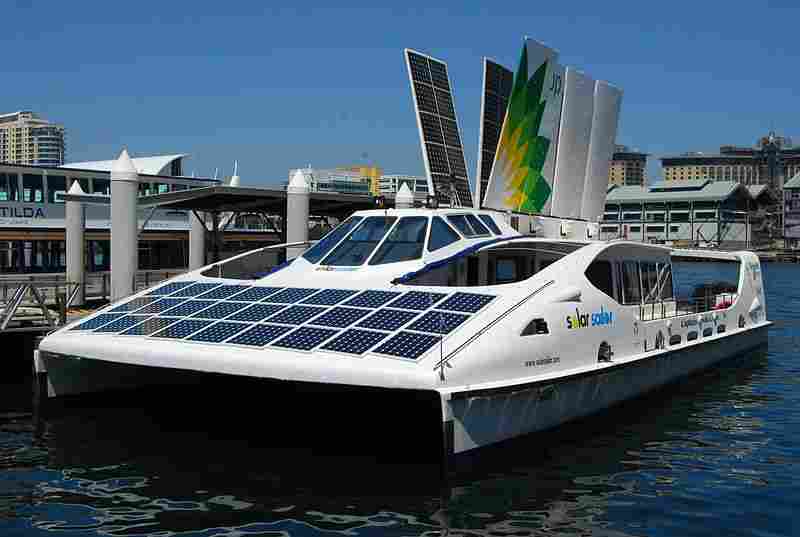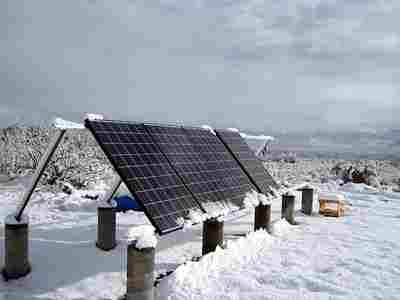11+ Benefits of Solar Energy Discussed
Benefits of solar energy include; geographic versatility, inexhaustible supply, storability, flexibility of technological modification, multiple uses, job creation, environment protection, low risk to public health, low maintenance, long-term cost savings, facilitation of energy independence, opportunity for technological integration.
This simplified article discusses some of the benefits of solar energy, as follows;
1). Geographic Versatility in Solar Energy Usage: One of the Benefits of Solar Energy
Solar energy is one of the most versatile forms of renewable energy, and while its usability varies with geographic location, it is available in all major regions of the world. This section discusses how geographic versatility benefits solar energy usage.
One of the best places on Earth for solar energy is the Atacama Desert in Chile. This desert, located on the west side of the Andes mountains, receives intense sunlight throughout the year. Here, an average-sized residential solar panel system (5kW) can produce over 9,000 kWh of electricity annually.
This exceptional solar production is due to the desert's geographical location, which makes it an ideal spot for harnessing solar energy.
Solar energy production varies significantly with geographic location. Some regions receive more sunlight than others.
Solar irradiance, which is simply the amount of sunlight a location receives, depends on factors like latitude, altitude, and climate. For instance, areas closer to the equator often receive more direct sunlight, making them excellent candidates for solar energy installations.
Depending on where you are in the world, the size and design of solar panels may vary for the same power generation. Solar panel systems in regions with abundant sunlight may require smaller panels to achieve the same energy output as larger panels in less sunny areas.
Advances in technology are continually improving the efficiency of solar panels, making them more adaptable to different geographical locations.
Solar energy is also versatile in its applications (as discussed separately later in this article) It can generate electricity to power homes, cities, vehicles, and even satellites. Moreover, it's used in off-grid areas, providing electricity to places without access to traditional power sources. This versatility makes solar energy valuable in a wide range of geographic locations, from densely populated cities to remote rural areas.
Best Geographic Locations for Solar Energy
The best locations for solar energy are typically those with high solar irradiance, low cloud cover, longer daylight hours, and minimal obstruction/shade.
Regions closer to the equator, where sunlight is more direct and intense, tend to have higher solar irradiance and are excellent for solar energy generation.
Areas with minimal cloud cover receive more sunlight, enhancing the efficiency of solar panels.
Locations with longer daylight hours, such as those closer to the poles during their summer months, can maximize solar energy production.
Sites with minimal shading, such as open fields or rooftops free from obstructions, are ideal for solar installations.
2). Inexhaustible Supply of Solar Energy
Solar energy is an incredible source of power because it is considered inexhaustible. This section sheds light on the inexhaustible quality of solar energy.
Solar energy comes from the sun, and the sun is always shining somewhere on Earth. As long as the sun exists, we can harness its energy. While stars like the sun do eventually run out of fuel and fade away, this process takes billions of years. In human terms, it's virtually eternal.
The sun is an immense source of energy. Every day, it bathes our planet in an abundance of sunlight. Unlike fossil fuels, which are finite and can be depleted, solar energy is continuously available without harming the environment.
Solar energy belongs to a category of resources known as "renewable" and "inexhaustible." These are resources that can be continuously replenished by natural processes and are virtually impossible to deplete.
Examples of Inexhaustible Energy Resources
Examples of inexhaustible energy resources include wind, flowing water, geothermal heat, and tidal energy.
Wind is generated by the movement of air masses, and it's constantly in motion around the globe. Wind turbines capture this energy, making it an inexhaustible source.
Flowing water, like that in rivers and waterfalls, powers hydropower plants. The water cycle ensures a continuous supply, making it an inexhaustible resource.
Deep within the Earth, there is an abundant amount of heat. Geothermal power taps into this heat to produce electricity, and it's considered inexhaustible because the Earth's heat is virtually limitless.
The gravitational pull of the moon causes tides in the ocean, creating a reliable and constant ebb and flow. Tidal energy generators can capture this energy, making it an inexhaustible source.
Renewable vs. Inexhaustible Energy
Renewable energy is energy from sources that naturally replenish themselves, like solar, wind, and hydropower. While they are virtually inexhaustible in the long term, they can be limited by constraints that affect instantaneous availability.
Inexhaustible resources, on the other hand, are truly infinite. They cannot be depleted, even with continuous use. Solar energy, along with wind, geothermal, water, and others, falls into this category, while bioenergy is renewable but limited by the instantaneous availability of biofuel.
In essence, solar energy is considered inexhaustible because it is derived from a source, the sun, that will continue to provide energy for billions of years, making it a limitless and sustainable power source for our planet.
3). Storability: One of the Benefits of Solar Energy
Solar energy has a fantastic benefit: it can be stored for future use. This section further discusses the storability of solar energy.
Most commonly, solar energy is stored in specialized batteries. These batteries act like big containers for electricity. When your solar panels make more energy than you need, the extra goes into these batteries. Later, when the sun isn't shining or it's nighttime, you can use the stored energy.
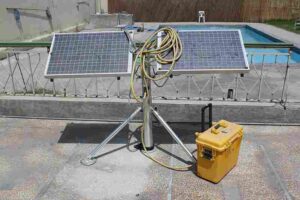
There are different types of batteries used to store solar energy, like lithium-ion, lead-acid, and flow batteries. Each has its own advantages and costs.
In homes with solar panels on the roof, you can have an electric battery bank. It functions like a solar piggy bank that saves energy for when you need it. Storing solar energy is like having a backup plan. If there's a power outage or the sun isn't shining, you can still have electricity.
Battery storage is also one of the most efficient ways to store solar energy. It ensures that you can use the energy you capture from the sun to its fullest.
Ways to Conserve Solar Energy
Some simple ways to conserve solar energy are;
1. Use energy-saving appliances.
2. Unplug appliances when not in use.
3. Try to reduce energy usage during the day.
4. Increase solar panel capacity.
5. Consider solar freezers and refrigerators.
Why Solar Energy Storage Matters
Storing solar energy is crucial because it allows solar power to contribute to the electricity supply even when the sun isn't shining. This means that solar energy can be used day and night, making it a reliable and sustainable energy source.
Among the various methods to store solar energy, batteries, especially lithium-ion batteries, are known to be very efficient and effective. They can store a lot of energy for a long time.
4). Flexibility of Technological Modification in Solar Energy
One of the amazing things about solar energy is how flexible and adaptable it is. Scientists and engineers are constantly finding new ways to make solar technology better and more efficient. This section highlights some examples of how solar energy technology can be upgraded and modified.
Innovative Solar Technologies
The flexibility of solar energy technology can be observed in its numerous innovations, which include solar balloons, solar shingles, windows, paint, largescale passive solar design, infrared spectrum solar panels, and floating solar farms.
Solar balloons are simply big solar balloons that capture sunlight high in the sky. These balloons can be placed where the sun shines the brightest, even above clouds or in remote areas.
Special windows can be designed to collect sunlight and turn it into electricity. So, not only do windows let light in, but they also generate power for your home.
Passive solar design is about designing buildings and spaces to naturally collect and use solar heat and light. It's like creating spaces that work with the sun to stay warm or cool.
Houses can be painted with specialized pigments called solar paints. They can absorb sunlight and turn it into electricity, making the entire house a solar conversion system.
Scientists are exploring solar panels that can capture the sun's infrared light, which is not visible to the human eye. This means even more energy from the sun can be converted into electricity.
Solar panels can be placed on water bodies like lakes and reservoirs. These floating solar farms make use of available space and also help reduce evaporation from water bodies.
Improvements in Solar Technology
Researchers are always trying to make solar cells more efficient at converting sunlight into electricity.
New materials like perovskites and organic semiconductors are being used to create better and more efficient solar cells. Some breakthroughs involve adding layers of different materials to capture more types of sunlight, making solar panels even more resilient and effective.
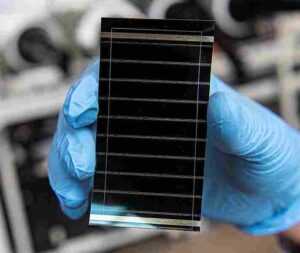
Photovoltaic cells are the basic units that convert sunlight into electricity. They are like tiny power generators on solar panels.
The future of solar energy is bright. Scientists are looking into advanced technologies that can change how we use and generate electricity. This includes better ways to store solar power and innovative materials that make solar panels more powerful.
Solar technology is not static; rather it is always evolving. As scientists and engineers discover new ways to capture and store sunlight, solar energy becomes even more efficient and accessible. It's like upgrading your phone to get the latest features, but in this case, it's about upgrading how we harness the power of the sun to benefit everyone.
5). Multiple Uses: One of the Benefits of Solar Energy
Solar energy is very versatile and can be put to a wide range of uses, making it a valuable resource for various aspects of our lives. This section briefly discusses some examples of how solar energy is used.
Possible Uses of Solar Energy
The possible uses of solar energy include electricity generation, water and space heating, ventilation, lighting, transportation, cooking, distillation, desalination, sustainable farming, water pumping, refrigeration and air conditioning.
Solar panels, also known as photovoltaic cells, capture sunlight and convert it into electricity. This electricity can power our homes, schools, businesses, and even entire cities. It's a clean and sustainable way to generate electrical energy.
Thermal solar systems use the sun's heat to warm up water for various purposes, including bathing, cleaning, and heating homes and swimming pools. It's an eco-friendly way to meet our hot water needs.
Solar energy can be harnessed for space heating. Special systems can capture the sun's heat and distribute it inside buildings to keep them warm during the colder months. It's an energy-efficient way to stay comfortable.
Solar-powered fans and ventilation systems can help regulate indoor temperatures and improve air quality. These systems use solar energy to run fans, reducing the need for traditional electricity.
Outdoor areas, such as gardens, streets, and parking lots, can be illuminated using solar-powered lights. These lights use energy stored from sunlight during the day to light up the night.
Solar energy isn't limited to large installations. It can be used to charge small devices like smartphones, tablets, and portable speakers. Portable solar chargers are handy for people on the go.
Transportation also stands to benefit from solar power, which can be used to fuel electric vehicles (EVs). Solar panels on EVs can convert sunlight into electricity to extend their range. Solar charging stations can also power up electric cars.
Special solar cookers use sunlight to cook food. They are particularly useful in regions with abundant sunlight and limited access to traditional cooking fuels.
Solar energy can be used for water purification through distillation processes. This is crucial in areas where access to clean drinking water is a challenge.
Solar-powered desalination plants can turn seawater into freshwater, addressing water scarcity issues in coastal regions.
Solar panels can be installed on farmland without hindering crop growth, allowing farmers to generate electricity while continuing agricultural activities.
Solar energy is used to run certain forms of public transportation, like solar buses and trams, reducing emissions and dependence on fossil fuels.
Solar-powered calculators, watches, and backpacks with built-in solar panels are common examples of how solar energy can be integrated into everyday items.
Experimental solar aircraft use sunlight to power their engines, enabling long-duration flights with minimal environmental impact.
Solar panels on boats and ships can generate electricity to power onboard systems and reduce reliance on diesel generators.
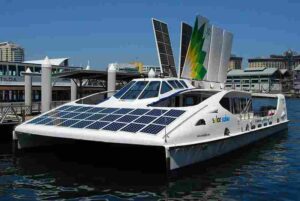
In remote areas without access to a power grid, solar water pumps are used for irrigation and providing clean water.
Solar refrigerators are used in off-grid locations to keep vaccines and medicines at the right temperature.
Another potential use of solar energy is for cooling systems in buildings, where it may help to offset the high energy demand of air conditioning.
Solar desalination plants turn seawater into freshwater using solar energy, addressing water scarcity in arid regions.
Lastly, solar energy is also used in educational programs to teach students about renewable energy and its applications.
Three Main Uses of Solar Energy
The three main uses of solar energy are; electricity generation, water heating, and space heating.
Solar panels convert sunlight into electricity, which can be used to power homes, businesses, and more.
Solar thermal systems can be used to heat water for various purposes, such as bathing and swimming.
Also, solar energy can be used to warm up spaces inside buildings, reducing the need for traditional heating methods.
6). Job Creation through Solar Energy
One of the significant benefits of solar energy usage is the creation of jobs. The solar energy industry has become a major driver of employment worldwide. This section highlights some examples and insights into how solar energy creates jobs.
Avenues for Job Creation in the Solar Energy Industry
Job creation in the solar energy industry can be in areas like production and installation, research and development, engineering and design, financing and investment, maintenance and repairs, supply chain and logistics, education and training.
The solar energy industry offers employment opportunities in the production and installation of solar panels. This includes manufacturing solar panels, inverters, and other components, as well as installing solar energy systems on rooftops and in solar farms.
Solar technology is continually evolving, leading to jobs in research and development (R&D) to improve the efficiency and affordability of solar panels and related equipment.
Engineers and designers are needed to plan and develop solar energy projects, ensuring they are optimally designed for maximum energy generation.
The solar industry attracts investments and financing, leading to job opportunities in financial institutions and investment firms focused on renewable energy projects.
Solar energy systems require periodic maintenance and repairs, creating jobs for technicians and service providers.
The solar industry relies on a complex supply chain, creating jobs in logistics, transportation, and warehousing.
Solar investments often stimulate local economies, leading to job creation in various sectors, including hospitality, restaurants, and retail, due to increased economic activity in solar-rich regions.
With the growth of the solar industry, there is a demand for education and training programs to prepare a skilled workforce, leading to job opportunities in educational institutions and training centers.
J Jobs are also created indirectly through the positive environmental impacts of solar energy, such as reduced air pollution and health-related job sectors.
Global Impact of the Solar Energy Sector With Regards to Job Creation
According to reports, the global renewable energy sector, including solar energy, provided 12.7 million jobs. The solar industry alone employed over 242,000 individuals in the United States in 2020. This growth is expected to continue as the world transitions toward cleaner energy sources.
Renewable energy sources like solar create more jobs for every unit of electricity generated compared to fossil fuels. This indicates that investing in solar and other renewables not only benefits the environment but also stimulates economic growth and employment. It however does not contradict the fact that fossil fuels have an overall larger workforce, due to their widespread use.
Renewable energy sources, including solar and wind, have been significant job creators in recent years. The solar industry, in particular, has seen substantial growth in employment.
While the number of jobs generated by specific energy sources can vary by region and time, the renewable energy sector, as a whole, has consistently created a substantial number of jobs globally. In some areas, solar and wind energy have shown the most significant job growth among renewable sources.
So, while it is challenging to pinpoint a single energy source that creates the most jobs universally, renewable energy, including solar power, is a reliable driver of employment in the transition to cleaner and more sustainable energy systems.
7). Environmental Protection through Solar Energy Usage
One of the most significant benefits of solar energy usage is its positive impact on the environment. Solar energy is environmentally friendly, as shown in discussions within this section.
Aspects of the Environment-Friendliness of Solar Energy
Solar energy is environment friendly because it reduces greenhouse emissions, decreases air pollution, conserves water resources, reduces oil dependence, mitigates risk of resource depletion, protects natural ecosystems, and reduces regional carbon footprint.
Solar power generation produces electricity without emitting harmful greenhouse gases like carbon dioxide (CO2) and methane (CH4), which are major contributors to global warming and climate change. By using solar energy, we reduce the reliance on fossil fuels, which release these gases when burned.
Solar panels generate electricity without emitting air pollutants, such as sulfur dioxide (SO2), nitrogen oxides (NOx), and particulate matter. Traditional energy sources like coal and natural gas release these pollutants into the atmosphere, leading to poor air quality and health issues.
Unlike some conventional power plants that require large amounts of water for cooling, solar energy systems do not use water for electricity generation. This helps conserve valuable freshwater resources, reducing the strain on aquatic ecosystems and addressing water scarcity issues.
Solar energy lessens the dependence on oil as an energy source. The extraction, transportation, and burning of oil can lead to oil spills and environmental damage. By transitioning to solar power, we reduce the risks associated with oil-related accidents.
Solar energy relies on the sun, an abundant and sustainable source of energy. It does not deplete finite resources like fossil fuels, which are becoming scarcer and more environmentally damaging to extract.
Solar energy systems have a low carbon footprint throughout their lifecycle, from manufacturing and installation to operation. This means they do not significantly contribute to the buildup of CO2 in the atmosphere.
Solar installations, especially on rooftops and non-agricultural land, have a smaller footprint compared to many other forms of energy infrastructure. This helps preserve natural habitats and reduces habitat destruction associated with resource extraction.
Solar power generation is generally silent, unlike some conventional power plants that produce noise pollution, which can disturb ecosystems and nearby communities.
Lastly, solar panels have a long lifespan and require minimal maintenance, reducing the need for frequent replacements and the associated environmental impact of manufacturing new panels.
How to Make Solar Energy More Environmentally Friendly
Ways make solar energy even more environmentally friendly include efficiency improvement, recycling, high-quality storage systems, and sustainable manufacturing. These measures are enumerated below;
1). Continuously work on improving the efficiency of solar panels to maximize energy output and minimize the environmental footprint.
2). Develop and implement better recycling technologies for solar panels to reduce waste and recover valuable materials.
3). Promote the use of sustainable materials and practices in the manufacturing of solar panels and related components.
4). Enhance energy storage technologies, such as batteries, to increase the usability of solar energy and reduce reliance on non-renewable backup power sources.
5). Invest in research and development to explore new materials and technologies that can further reduce the environmental impact of solar energy production.
By adopting these strategies, we can continue to harness the environmental benefits of solar energy while minimizing any potential drawbacks, making solar power an even cleaner and more sustainable energy source.
8). Low Risk to Public Health: One of the Benefits of Solar Energy
Solar energy usage offers significant benefits to public health by reducing the health risks associated with traditional energy sources. This section discusses how solar energy contributes to better public health.
Benefits of Solar Energy to Public Health
The benefits of solar energy toward public health include; reduced air pollution, decreases greenhouse gas emissions, healthier indoor environments, and lower accident risk.
Solar power generation does not produce harmful air pollutants, such as sulfur dioxide (SO2), nitrogen oxides (NOx), and particulate matter. These pollutants, commonly released by fossil fuel-based power plants, are linked to respiratory diseases like asthma and bronchitis. By using solar energy, we can reduce exposure to these pollutants, especially in urban areas.

Solar energy significantly reduces the emission of greenhouse gases like carbon dioxide (CO2). These gases are major contributors to global warming and climate change, which can lead to health issues such as heat-related illnesses, the spread of infectious diseases, and food and water shortages.
Lighting and electricity systems powered by solar, can replace kerosene lamps and diesel generators in areas without access to the grid. These traditional energy sources produce indoor air pollution, leading to respiratory problems and other health issues. Solar energy provides a cleaner and safer alternative.
The use of solar energy reduces the risk of accidents associated with traditional energy sources. For example, the storage and transportation of fossil fuels can result in oil spills, explosions, and fires, leading to injuries and environmental degradation. Solar energy systems, being non-combustible and with no fuel storage requirements, pose lower risks.
Solar energy adoption contributes to global health by reducing the overall burden of diseases related to air pollution and climate change. Cleaner air and a more stable climate can lead to fewer cases of heart disease, asthma attacks, respiratory infections, and premature deaths.
Solar power can indirectly promote gender equality by providing access to electricity for tasks like cooking and lighting. This reduces the time and effort required for household chores, which can disproportionately affect the health of women and girls in regions without reliable electricity.
Benefits of Solar Energy to Human Health
The benefits of solar energy to human health include; improved respiratory health, lower mortality rates, enhanced life quality, reduced infectious disease risks, and healthcare access.
Reduced exposure to air pollutants from burning fossil fuels leads to better respiratory health, particularly for individuals with asthma and other respiratory conditions.
By mitigating climate change, solar energy helps reduce extreme weather events and the associated health risks, such as heatstroke and injuries.
Access to clean and reliable electricity through solar power improves living conditions, enabling refrigeration of medicines, clean water, and adequate lighting, all of which are crucial for good health.
Stable and predictable energy sources like solar power support healthcare facilities in remote areas, contributing to better disease control and prevention efforts.
olar energy can power medical equipment in off-grid and remote areas, improving healthcare access and quality.
The role of solar energy in reducing air pollution positively impacts both the environment and human health.
9). Low Maintenance: One of the Benefits of Solar Energy Usage
Solar energy systems are known for their low maintenance requirements, making them an attractive and hassle-free source of renewable power. This sections shows why solar energy is considered low maintenance.
Factors Behind the Low Maintenance Requirement of Solar Energy
Solar energy is low maintenance because its systems usually have no moving parts, minimal waste production, sturdy design, long lifespan, minimal wear and tear, as well as reliable performance.
Solar panels, which are at the core of solar energy systems, do not have any moving parts that wear out over time. Unlike many other forms of energy generation, such as traditional power plants with turbines and engines, solar panels have fewer components that can malfunction or require regular servicing.
It is typically easy to maintain solar panels with minimal cleaning. Dust, dirt, and debris that accumulate on the surface of solar panels can reduce their efficiency. However, cleaning them is a straightforward task. Simply rinsing them with a garden hose or wiping them with a soft cloth a few times a year is usually sufficient to keep them working optimally.
Solar panels are designed to withstand various weather conditions. They are built to endure rain, snow, and even hail. Their sturdy construction reduces the likelihood of physical damage, which means less maintenance and repair work.
Most solar panels have a long lifespan, often lasting 25 years or more. During this period, they require minimal intervention, mainly consisting of occasional cleaning and visual inspections to ensure they are secure and free of defects.
Solar energy systems have fewer components prone to wear and tear compared to traditional power generation systems. There are no combustion engines, turbines, or complex mechanical parts that can break down, reducing the need for frequent maintenance.
Once installed and properly maintained, solar panels continue to generate electricity reliably for many years. They have a low rate of performance degradation, meaning they remain efficient throughout their operational lifespan.
Maintenance of Solar Panel Systems
Regular maintenance of a solar panel system typically involves;
1. Cleaning the solar panels every few months to remove dirt, dust, and debris.
2. Ensuring that the panels are securely fastened and free of defects.
3. Checking the electrical connections and wiring for any signs of wear or damage.
4. Verifying that the system's inverter, which converts the generated DC electricity into AC electricity for household use, is functioning correctly.
Renewable Energy with the Lowest Maintenance
Solar energy is often considered one of the renewable energy sources with the lowest maintenance requirements.
Wind turbines, while also a clean energy source, have more moving parts and require more regular maintenance to keep the mechanical components functioning correctly. In comparison, solar panels have a simpler design and fewer components that can break or wear out, making them a reliable and low-maintenance choice for renewable energy generation.
10). Long-Term Cost Savings
One of the significant benefits of using solar energy is the potential for long-term cost savings. Solar panels, while requiring an initial investment, can lead to substantial financial advantages over time. This section discusses why solar energy is an excellent choice for long-term cost savings.
How Solar Energy Saves Cost for Users
Solar energy saves cost through reduced energy bills, financial returns on investment, long operational lifespan, predictable energy costs, environmental conservation, and potential government incentives.
Once installed, solar panels harness the power of the sun to generate electricity for your home or business. This means you'll rely less on electricity from your utility company, resulting in lower monthly energy bills. The exact amount you save depends on factors like the size of your solar system and local electricity rates.
Solar energy systems typically offer a return on investment (ROI) that becomes more significant as time goes on. While there's an initial cost, the savings on energy bills often outweigh this cost over the life of the system. These savings can be substantial, particularly in areas with high electricity rates.
Solar panels have a long operational lifespan, typically lasting 25 years or more. During this period, they continue to generate electricity, which translates into ongoing cost savings. The electricity they produce is essentially free once the system is paid off.
Solar energy provides predictability in energy costs. With fossil fuels, energy prices can fluctuate due to market conditions and geopolitical factors. Solar, on the other hand, relies on sunlight, a free and abundant resource, so the cost of generating electricity remains stable.
In addition to cost savings, solar energy systems contribute to environmental protection by reducing greenhouse gas emissions. While this benefit may not have a direct financial return, it can lead to cost savings in the form of lower healthcare expenses and mitigating the impacts of climate change.
Many governments and regions offer financial incentives and tax credits to promote solar energy adoption. These incentives can further reduce the initial cost of installation and enhance long-term savings.
Examples of Estimated Savings
A typical residential solar panel system can save homeowners up to 50-70% on their energy bills. For instance, a 6-kilowatt home solar system generating 9,000 kilowatt-hours of electricity annually could save around $1,346 on annual energy bills.
Businesses investing in solar panels might save thousands of dollars annually on utility costs. For example, if a solar panel purchase costs $70,000 and saves $7,000 in utility costs each year, it would take ten years to pay for itself. However, after this period, the system would continue to provide substantial savings.

11). Facilitation of Energy Independence: One of the Benefits of Solar Energy Usage
Solar energy plays a significant role in facilitating energy independence, offering several advantages that contribute to reducing reliance on traditional grid-based power sources.
How Solar Energy Promotes Energy Independence
Solar energy promotes energy independence through off-grid capability, self-sufficiency, reduced reliance on fossil fuels, energy security, reduced energy bills, and increased resource control.
Solar panels can enable homes and businesses to function off the grid, meaning they generate their own electricity independently. This is particularly important in remote areas or during grid outages when traditional power sources may not be available.
Homes are enabled to meet their energy needs using solar power, without depending solely on centralized electricity grids. By harnessing the sun's energy, individuals and communities can become more self-sufficient in generating electricity.
Traditional electricity generation often relies on fossil fuels like coal, oil, and natural gas. Solar energy provides a clean and renewable alternative, reducing dependence on these polluting energy sources.
With solar panels in place, individuals and communities can have greater energy security. They are less vulnerable to power outages caused by natural disasters, fuel shortages, or grid failures.
Solar panels can significantly reduce electricity bills by generating electricity on-site. This financial relief can be particularly valuable for homeowners and businesses looking to cut energy costs.
Lastly, solar energy gives individuals and nations control over their energy resources. This means countries can decide how their energy resources are allocated, reducing reliance on energy imports.
Instances of Solar Energy Promoting Energy Independence
In the United States, personal energy independence is commonly achieved through the use of solar power. Homeowners can generate their electricity, reducing reliance on the centralized grid.
Solar power can help reduce dependency on imported fossil fuels, enhancing energy security and reducing trade deficits in developing countries.
During grid outages or in remote areas, solar panels provide a reliable source of electricity, enabling homes and businesses to function independently.
Overview of Energy Independence with Respect to Solar Energy
Solar energy is not entirely independent, as it relies on sunlight. However, it can provide a degree of energy independence by allowing homes and businesses to generate their electricity.
Electricity independence refers to the ability of a home, business, or community to generate its electricity independently, reducing reliance on external sources, such as centralized grids.
The benefits of energy independence include reduced vulnerability to power outages, lower electricity bills, reduced reliance on fossil fuels, greater control over energy resources, and enhanced energy security.
12). Opportunity for Technological Integration in Solar Energy Usage
Solar energy usage offers a unique opportunity for technological integration, allowing for the development of innovative technologies and the integration of various energy sources and systems. This benefit is further discussed as follows;
Solar energy systems can be seamlessly integrated into existing electricity grids. Technologies and tools are developed to allow solar power to feed into the grid while maintaining its reliability, security, and efficiency. This integration ensures a smoother transition to cleaner energy sources.
It is possible to combine solar energy with other renewable energy sources like wind, hydropower, and geothermal energy. These technologies often use inverters to convert electricity into a grid-compatible form, allowing for a more diverse and sustainable energy mix.
Solar systems can integrate energy storage solutions like batteries. This technology enables the storage of excess solar energy during the day for use during the night or cloudy periods, increasing the reliability of solar power.
In some cases, solar energy integration includes the development of microgrids. These localized energy systems can operate independently or in conjunction with the main grid, enhancing energy resilience and reliability.
Solar panels can be seamlessly integrated into building designs, becoming part of the architecture and serving as regular building elements. This approach is known as building-integrated photovoltaics (BIPV).
Examples of Technological Integration with Solar Energy
Microgrids that incorporate solar panels and energy storage systems, provide local communities with reliable and sustainable energy sources, reducing their dependence on centralized grids.
Combined solar and wind farms use advanced grid integration technologies to provide a more stable and consistent energy supply.
Energy management systems and smart grids enable homeowners and businesses to optimize their solar energy usage, reduce costs, and contribute to grid stability.
Additional Notes of Solar Energy Integration
Solar energy integration refers to the process of incorporating solar power into existing energy systems, grids, or technologies while ensuring reliability and efficiency.
Solar panels can be integrated into various energy systems by using inverters, energy storage solutions, and advanced grid technologies. Additionally, solar panels can be incorporated into building designs through building-integrated photovoltaics (BIPV).
Conclusion
Benefits of solar energy are;
1. Geographic Versatility
2. Inexhaustible Supply
3. Storability
4. Flexibility of Technological Modification
5. Multiple Uses
6. Job Creation
7. Environment Protection
8. Low Risk to Public Health
9. Low Maintenance
10. Long-Term Cost Savings
11. Facilitation of Energy Independence
12. Opportunity for Technological Integration
